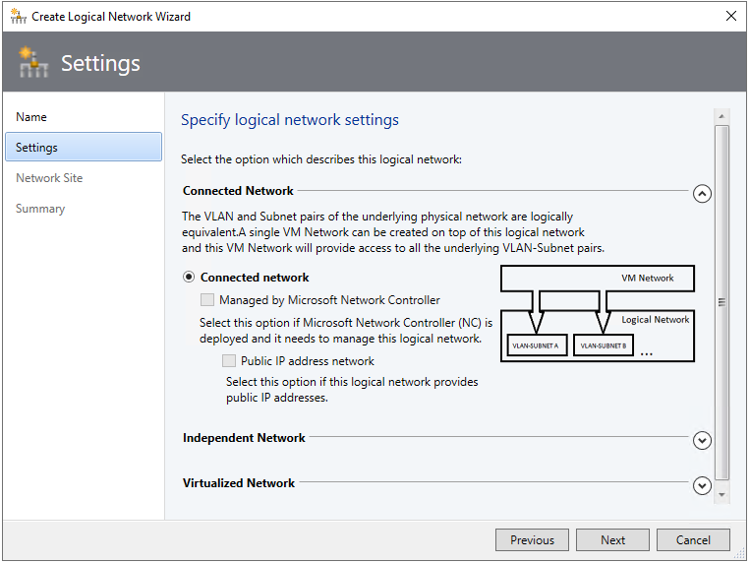
How Hotpatching on Windows Server is changing the game for Xbox
In this article you’ll learn how Microsoft has been using Hotpatch with Windows Server 2022 Azure Edition to substantially reduce downtime for SQL Server databases running on…



This blog post was authored by Vithalprasad Gaitonde, Principal PM Manager, System Center
On March 14, 2019, Microsoft announced the availability of System Center 2019 for Windows Server 2019 to support management of Windows Server 2019 and a host of other new management capabilities. Today we are announcing that the first update rollup release (UR1) to the System Center 2019 suite is now available! Customers can download UR1 for System Center 2019 from Microsoft Update as well as other channels. This update covers System Center Operations Manager, Virtual Machine Manager, Data Protection Manager, Orchestrator, and Service Manager. In this update, we are releasing new features in several of the products within the System Center suite. If you’d like to learn more about what those new features are, keep reading!
Operations Manager is one of the most widely used monitoring platforms by enterprise customers and we have continued to improve it to better suit customer’s needs.
Operations Manager 2019 UR1 adds support for gMSA accounts, adding extra security and reducing management overhead for administrators. Operations Manager has several components including management servers, gateways, agents, an operations database, a data warehouse, and it uses several accounts for its services. Managing account credentials, password expiry, and account rollover presents a formidable overhead for the administrator. Any mistake made, to reset a password to an account before expiration, for example, can lead to a catastrophic failure in monitoring. A group Managed Service Account is a managed domain account in Windows that takes the burden off the administrator and provides automatic password management.
Operations Manager patching, simplified! When Microsoft releases an update to Operations Manager, it can be quite onerous to perform patching on a deployment as there are several steps. They include the following:
These steps are not very scalable across a large Operations Manager estate. The all-new management server patch installer in Operations Manager 2019 UR1 simplifies these steps and the patching of an Operations Manager environment.
Operations Manager has supported heterogenous environments for a long time. Many customers have Windows Server and Linux environments, and use Operations Manager to monitor both. One piece of feedback we received from Linux customers was that the agent was losing connection with the Operations Manager management server, which was due to an overload of monitoring workflows running. We addressed this reliability issue in Operations Manager 2019 UR1. You can also now tune the performance of the Linux agent by selecting the specific resources that help you monitor them best. You can also use Operations Manager to monitor Red Hat Enterprise Linux 8, and instead of having a different management pack for each Linux distro, and each version, you can now work with just one Linux management pack. This alleviates the need for maintaining multiple Linux management packs and simplifies administration.
Besides investing in the core Operations Manager platform, we have added new functionality to the management packs.
The Storage Spaces Direct management pack has been enhanced to support monitoring at all layers of the stack, including physical disks, servers, the storage pool, the network, and volumes, which show health and performance metrics across the stack.
The Azure management pack enables monitoring of Azure resources from Operations Manager and enables a single pane of glass across on-premises and Azure. With the new feature, “Resource groups support”, customers can select specific resource group(s) under a subscription and choose the specific service types they want to monitor. With HTML5 dashboard support in Azure management pack, customers can view Azure resources and alerts for any subscription, resource group, or service type in the Operations Manager web console.
Here is where you can download the Azure management pack and Storage Spaces Direct management pack.
You can find more updates we’ve made in Operations Manager UR1 in this article.
Large enterprises usually have multi-site datacenter deployments to cater to various offices across the globe, and a local library server for easier access to files to facilitate virtual machine (VM) deployment. This is done to avoid any network latencies leading to a poor deployment experience. Enterprises use replication technologies to ensure that library files are in sync and consistent across datacenters, which ensures uniform VM deployment. Virtual Machine Manager 2019 UR1 now supports the management of library servers which are replicated. You can use any replication technologies such as distributed file system replication (DFSR) to replicate and manage the shares through Virtual Machine Manager. This ensures that the fabric has consistent virtual hard disk (VHD) images, templates, and other artifacts.
We understand that managing networks in Virtual Machine Manager has become a complex process for customers, which is why we’ve begun simplifying it and providing in-product descriptions, visual aids through graphical representations, and integrated wizards for the setup. In Virtual Machine Manager 2019 UR1, there is a new logical network creation experience. You can also view the dependencies across all the networking elements in Virtual Machine Manager. We will continue down the path for simplifying networking in future releases.

Customers are increasingly adopting Hyper Converged Infrastructure (HCI) thanks to the lower cost of ownership that HCI provides. Storage Spaces Direct, a key technology for HCI, can be deployed and managed using Virtual Machine Manager. To provide the high performance network which is needed for the Storage Spaces Direct storage traffic, customers will now be able to configure data center bridging (DCB) settings for the Storage Spaces Direct cluster.
For details of other improvements and bug fixes that are part of this release, please refer to this Microsoft Knowledge Base (KB) article.
Windows Server supports Resilient File System (ReFS) for greater resiliency, availability, and scalability of various workloads. With Data Protection Manager 2019 UR1, you can backup workloads running on ReFS. You can also backup the workloads which are deployed on a ReFS volume with deduplication enabled.
Server Core installation option, which is without the GUI/desktop experience, provides for a smaller OS footprint and better security.Most customers now deploy server roles and applications on Server Core. With Data Protection Manager 2019, you now run the Data Protection Manager server on Server Core.
For easier onboarding to Azure Backup and to use Azure Storage for long term retention needs, Data Protection Manager now supports Azure Data Box for creating the initial backup. This eliminates the need for using the network for transferring the initial replica, which can take a long time. This feature is currently in preview. If you would like to use it, please send an email to systemcenterfeedback@microsoft.com.
Data Protection Manager has also seen significant investment in improving the performance of backup jobs. Please refer to this KB article for more details on the release of Data Protection Manager 2019 UR1.
We’re happy to let you know that significant updates have been made to Orchestrator and Service Manager 2019. You can read more about the improvements made to Orchestrator, and learn more about how we’ve enhanced Service Manager 2019 in update rollup one.
We hope you are as excited as we are about releasing System Center 2019 UR1. We look forward to receiving your feedback!